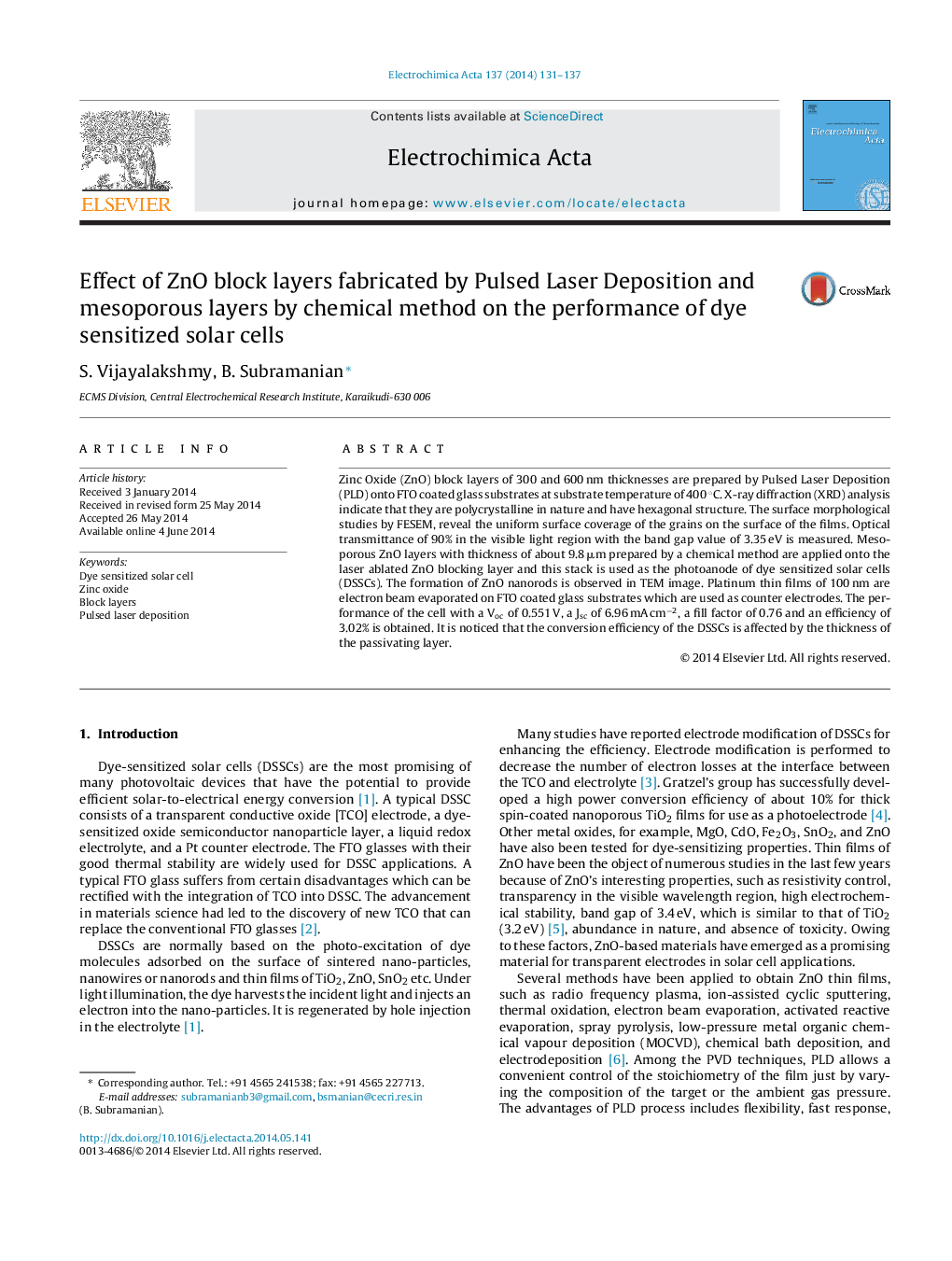| Article ID | Journal | Published Year | Pages | File Type |
|---|---|---|---|---|
| 185555 | Electrochimica Acta | 2014 | 7 Pages |
•Dense block layers with ZnO were fabricated by Pulsed laser deposition.•Pt counter electrodes were fabricated by electron beam evaporation.•ZnO nanorods by chemical method enhances dye absorption.•Laser ablated ZnO block layer has enhanced the efficiency.
Zinc Oxide (ZnO) block layers of 300 and 600 nm thicknesses are prepared by Pulsed Laser Deposition (PLD) onto FTO coated glass substrates at substrate temperature of 400 °C. X-ray diffraction (XRD) analysis indicate that they are polycrystalline in nature and have hexagonal structure. The surface morphological studies by FESEM, reveal the uniform surface coverage of the grains on the surface of the films. Optical transmittance of 90% in the visible light region with the band gap value of 3.35 eV is measured. Mesoporous ZnO layers with thickness of about 9.8 μm prepared by a chemical method are applied onto the laser ablated ZnO blocking layer and this stack is used as the photoanode of dye sensitized solar cells (DSSCs). The formation of ZnO nanorods is observed in TEM image. Platinum thin films of 100 nm are electron beam evaporated on FTO coated glass substrates which are used as counter electrodes. The performance of the cell with a Voc of 0.551 V, a Jsc of 6.96 mA cm−2, a fill factor of 0.76 and an efficiency of 3.02% is obtained. It is noticed that the conversion efficiency of the DSSCs is affected by the thickness of the passivating layer.
